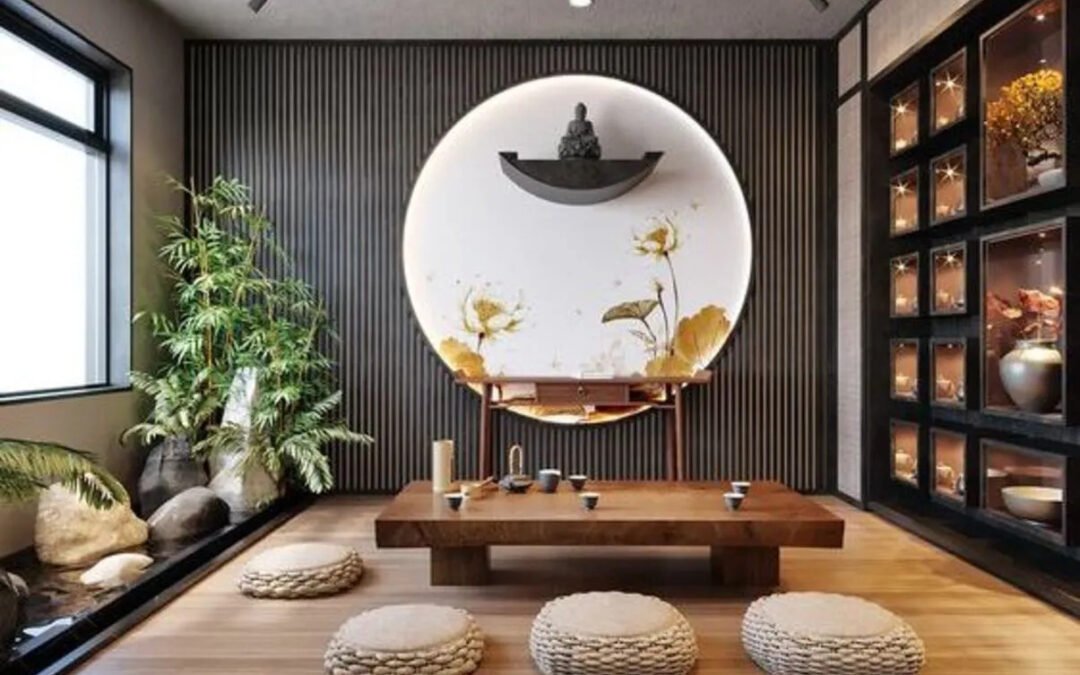The Japanese living room, with its serene ambiance and timeless design principles, offers a retreat from the hustle and bustle of modern life. Rooted in a rich cultural heritage, Japanese living room design is a harmonious blend of minimalism, natural elements, and a deep appreciation for tranquility. In this article, we explore the key elements that define the art of Japanese living room design and how it creates an inviting space that promotes relaxation and contemplation.
Minimalism as a Guiding Principle:
At the core of Japanese living room design is the philosophy of minimalism. This design approach emphasizes simplicity, functionality, and the elimination of unnecessary clutter. The Japanese concept of “Ma,” or negative space, plays a crucial role, allowing for a sense of openness and balance within the room. Furniture and decor are carefully chosen to serve a purpose, contributing to a clean and uncluttered atmosphere.
Natural Materials and Earthy Tones:
Japanese living rooms often showcase the use of natural materials, creating a seamless connection to the outdoors. Wood, in particular, is a dominant element, with furniture and flooring made from warm-toned woods like cedar and hinoki. The choice of natural materials enhances the sense of warmth and invites a touch of nature into the living space. Earthy tones, such as soft greens, muted browns, and neutral colors, contribute to a soothing and grounded environment.
Fusuma and Shoji Screens:
A defining feature of traditional Japanese living rooms is the use of Fusuma and Shoji screens. Fusuma are sliding panels adorned with paper or fabric, serving as flexible room dividers. Shoji screens, made of translucent paper and wooden frames, allow diffused natural light to filter through while maintaining privacy. The incorporation of these elements adds a traditional and authentic touch to Japanese living room design, fostering a sense of openness and adaptability.
Low Furniture and Flexibility:
Japanese living rooms often feature low-profile furniture, such as the kotatsu (a heated table) and zaisu (a floor chair with no legs). These pieces contribute to the overall sense of openness and accessibility within the space. The emphasis on flexibility is evident in the layout, where furniture can be easily rearranged to accommodate different activities or to create a more open floor plan for gatherings.
Tatami Flooring and Futons:
Tatami mat flooring is a quintessential element in Japanese living rooms, providing a soft and resilient surface. The standardized size of tatami mats has even influenced the dimensions of traditional Japanese rooms, creating a modular and harmonious layout. Additionally, futons, which are traditional Japanese bedding, add an element of versatility to the living room. They can be easily folded and stored, allowing the room to serve multiple functions throughout the day.
Seasonal Elements and Ikebana:
The Japanese appreciation for the changing seasons is reflected in the design of living rooms. Seasonal elements, such as ikebana (flower arranging), bring nature indoors and add a touch of color and freshness. Ikebana arrangements are often simple and elegant, emphasizing the beauty of natural materials. These seasonal touches contribute to a dynamic and ever-evolving atmosphere within the living room.
Zen Influence and Contemplative Spaces:
The influence of Zen Buddhism is palpable in Japanese living room design. Contemplative spaces, often featuring elements like meditation cushions and bamboo or stone accents, provide a retreat for introspection and mindfulness. Zen gardens, whether incorporated directly or symbolically, inspire a sense of tranquility and simplicity within the living space.
Minimalistic Decor and Personal Touches:
Decor in Japanese living rooms is characterized by simplicity and a lack of unnecessary ornamentation. Minimalistic art, such as calligraphy or carefully selected ceramics, adds a touch of elegance without overwhelming the space. Personal touches, such as family photographs or treasured objects, are thoughtfully integrated, creating a connection between the inhabitants and the living room.
Conclusion:
The art of Japanese living room design is a celebration of harmony, simplicity, and the beauty of nature. By embracing minimalism, natural materials, and a deep appreciation for tranquility, Japanese living rooms provide a sanctuary within the home. Whether you seek a space for relaxation, contemplation, or socializing, the timeless principles of Japanese design create an inviting and serene living room that stands the test of time.

